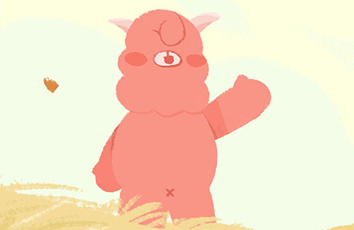2024年7月6日雅思纸笔阅读回忆及答案
2024年7月6日雅思纸笔考试阅读题题目及答案如下,部分考试题为原题,附上相近的阅读文章以供参考,羊驼雅思整理的考试真题为网友回忆版,仅供大家备考参考。

相关阅读:2024年雅思机经:听力、阅读、写作回忆及答案汇总
Reading
Passage 1:Animal Minds Parrot Alex 鹦鹉学舌
Paragraph A
In 1977 lrene Pepperberg, a recent graduate of Harvard University did something very bold. At a time when animals still were considered automatons, she set out to find what was on another creature's mind by talking to it. She brought a one-year-old African gray parrot she named Alex into her lab to teach him to reproduce the sounds of the English language. "| thought if he learned to communicate, l could ask him questions about how he sees the world."
Paragraph B
When Pepperberg began her dialogue with Alex, who died last September at the age of 31. many scientists believed animals were incapable of any thought. They were simply machines, robots programmed to react to stimuli but lacking the ability to think or feel. Any pet owner would disagree. We see the love in our dogs' eyes and know that, of course, they have thoughts and emotions. But such claims remain highly controversial.
Gut instinct is not science, and it is all too easy to project human thoughts and feelings onto another creature. How, then, does a scientist prove that an animal is capable of thinking - that it is able to acquire information about the world and act on it? "That's why l started my studies with Alex," Pepperberg said. They were seated - she at her desk, he on top of his cage - in her lab, a windowless room about the size of a boxcar, at Brandeis University. Newspapers lined the floor; baskets of bright toys were stacked on the shelves. They were clearly a team- and because of their work, the notion that animals can think is no longer so fanciful.
Paragraph C
Certain skils are considered key signs of higher mental abilities: good memory, a grasp of grammar and symbols, self-awareness, understanding others' motives, imitating others, and being creative. Bit by bit,in ingenious experiments, researchers have documented these talents in other species, gradually chipping away at what we thought made human beings distinctive while offering a glimpse of where our own abilities came from. Scrub jays know that other jays are thieves and that stashed food can spoil, sheep can recognize faces; chimpanzees use a variety of tools to probe termite mounds and even use weapons to hunt small mammals; dolphins can imitate human postures; the archerfish, which stuns insects with a sudden blast of water, can learn how to aim its squirt simply by watching an experienced fish perform the task. And Alex the parrot turned out to be a surprisingly good talker.
Paragraph D
Thirty years after the Alex studies began; Pepperberg and a changing collection of assistants were still giving him English lessons. The humans, along with two younger parrots, also served as Alex's flock, providing the social input all parrots crave. Like any flock, this one - as small as it was - had its share of drama. Alex dominated his fellow parrots, acted huffy at times around Pepperberg, tolerated the other female humans, and fell to pieces over a male assistant who dropped by for a visit. Pepperberg bought Alex in a Chicago pet store where she let the store's assistant pick him out because she didn't want other scientists saying later that she'd particularly chosen an especially smart bird for her work. Given that Alex's brain was the size of a shelled walnut, most researchers thought Pepperberg's interspecies communication study would be futile.
Paragraph E
"Some people actually called me crazy for trying this," she said."Scientists thought that chimpanzees were better subjects, although, of course, chimps can't speak.
Chimpanzees, bonobos, and gorillas have been taught to use sign language and symbols to communicate with us, often with impressive results. The bonobo Kanzi, for instance, carries his symbol-communication board with him so he can "talk" to his human researchers, and he has invented combinations of symbols to express his thoughts. Nevertheless, this is not the same thing as having an animal look up at you open his mouth, and speak. Under Pepperberg's patient tutelage, Alex learned how to use his vocal tract to imitate almost one hundred English words, including the sounds for various foods, although he calls an apple a "banerry." "Apples taste a litle bit like bananas to him, and they look a little bit like cherries, so Alex made up that word for them," Pepperberg said.
Paragraph F
It sounded a bit mad, the idea of a bird having lessons to practice, and willingly doing it. But after listening to and observing Alex, it was difficult to argue with Pepperberg's explanation for his behaviors. She wasn't handing him treats for the repetitious work or rapping him on the claws to make him say the sounds. "He has to hear the words over and over before he can correctly imitate them," Pepperberg said, after pronouncing 'seven" for Alex a good dozen times in a row. "|'m not trying to see if Alex can learn a human language," she added. "That's never been the point. My plan always was to use his imitative skills to get a better understanding of avian cognition."
Paragraph G
In other words, because Alex was able to produce a close approximation of the sounds of some English words, Pepperberg could ask him questions about a bird's basic understanding of the world. She couldn't ask him what he was thinking about, but she could ask him about his knowledge of numbers, shapes, and colors. To demonstrate Pepperberg carried Alex on her arm to a tall wooden perch in the middle of the room She then retrieved a green key and a small green cup from a basket on a shelf. She held up the two items to Alex's eye. "What's same?" she asked, Without hesitation, Alex's beak opened: "Co-lor" "What's different?" Pepperberg asked. "Shape," Alex said. His voice had the digitized sound of a cartoon character.
Paragraph H
For the next 20 minutes, Alex can through his tests, distinguishing colors, shapes, sizes, and materials (wool versus wood versus metal). He did some simple arithmetic such as accounting the yellow toy blocks among a pile of mixed hues. And, then, as if to offer final proof of the mind inside his bird's brain, Alex spoke up. "Talk clearly!" he commanded, when one of the younger birds Pepperberg was also teaching talked with wrong pronunciation. "Talk clearly!" "Don't be a smart aleck," Pepperberg said, shaking her head at him. "He knows all this, and he gets bored, so he interrupts the others, or he gives the wrong answer just to be obstinate. At this stage, he's like a teenager; he's moody, and l'm never sure what he'll do."
1-6 判断题
1.NG
2. NG
3. FALSE
4. TRUE
5. TRUE
6. FALSE
7-13 填空题
7. 100 English words
8. chimpanzees
9. avian cognition
10. particularly chosen
11. color
12. wrong pronunciation
13. teenager
Passage 2:Arctic fox 北极狐
14-21 段落标题匹配
14 Paragraph A-iv individual's movements
15 Paragraph B-ix research
16 Paragraph C-vii unanswered question
17 Paragraph D-i a remarkable skill
18 Paragraph E-iii Wide variations
19 Paragraph F-viii An a resource
20 Paragraph G-V changing environment
21-24 填空
21 footprints
22 ear tags
23 radio collars
24 satellite technology
25-26多选
B. population
E. greater competition
Passage 3:Siblings 家庭兄弟姐妹亲属
27-30 判断
27 N
28 NG
29 N
30 Y
31-34 选择
31 B shape
32 C inaccurate
33 C negative
34 D family
35-40 选词填空
35 G learning
36 B games
37 F greater
38 I closer
39 K well-being
40 D bahavior
相关推荐
热门话题:



